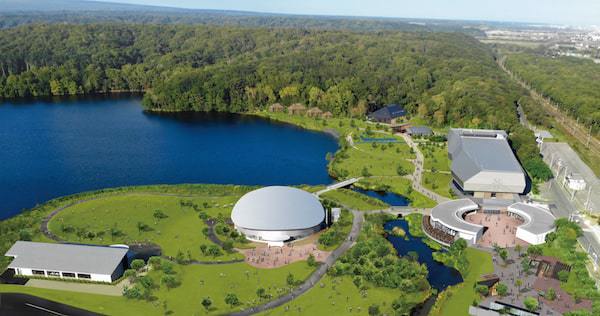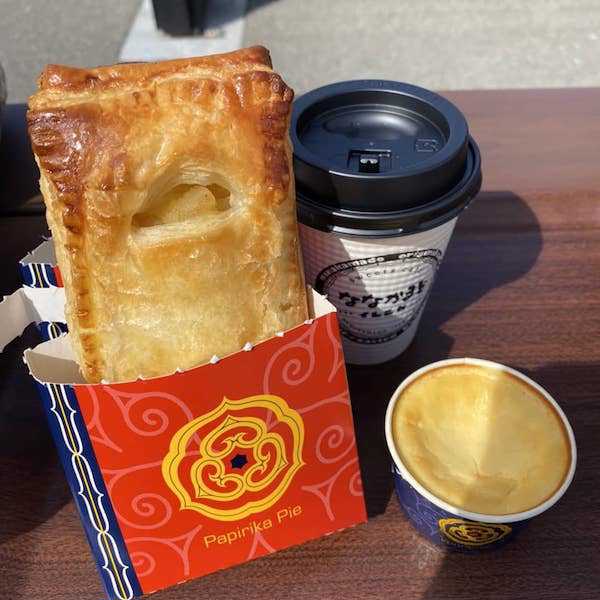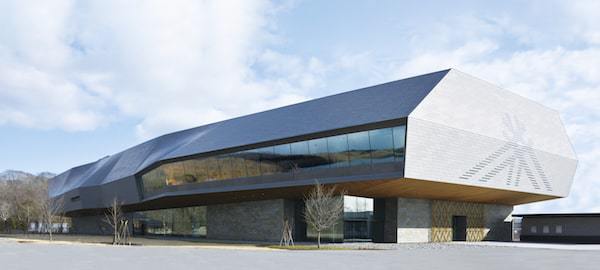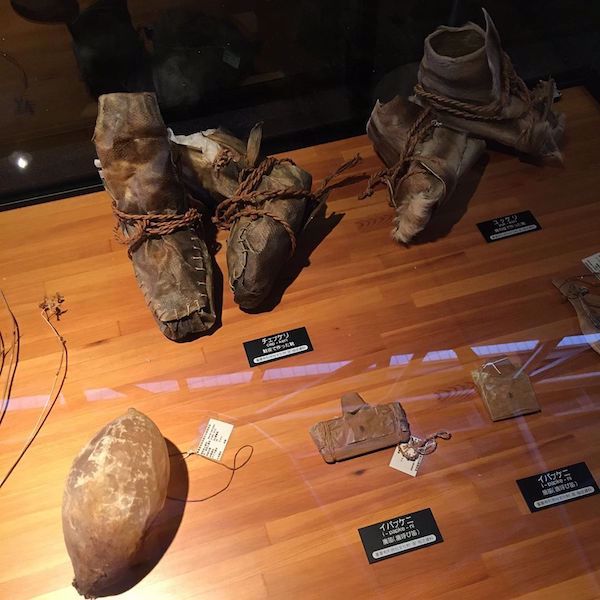What is Upopoy?
Opened in July 2020, Upopoy is a facility in Shiraoi, Hokkaido,
that aims to pass down the culture of the indigenous Ainu people who have lived in northern Japan, mainly in Hokkaido.
In the Ainu language, Upopoy means "singing in a large group".
※ Image is for illustration purposes.
With the declining population of the Ainu people, as well as a lack of promotional activities and public awareness,
the Ainu language, arts and traditions are currently in danger of being lost.
Throughout Japan, there’s also little understanding of the history and culture of the Ainu.
Upopoy was opened in 2020 as a national centre for teaching and learning about the Ainu history and culture.
The Ainu culture has a long history and was developed in harmony with the natural world.
The facility was created to pass down and share their culture, allowing anyone—regardless of age or the country they come from—to learn about
their views towards the world and nature around them.
How do you get to Upopoy?
The nearest station is Shiraoi Station on the JR Muroran Main Line.
Take the North Exit from the station and turn right. Follow the road and head right again at the first fork.
You will see Upopoy straight up ahead of you.
It's about 500 m from the station and about 10 minutes on foot.
(For details on access by bus, train or car, see the extra information below.)
If you go by car, then there’s parking available on site (246 car spaces, 10 motorcycle spaces),
as well as a second car park off site (311 car spaces, as well as bicycle and coach parking).
Free area around the entrance
Upopoy is divided into a paid zone starting at the National Ainu Museum, and a free zone near the entrance.
The area immediately after entering the site is free for anyone to walk around.
At the entrance, visitors are first welcomed by the "Izanai Corridor"(Path to the Ainu Sprit).
The corridor is made of concrete walls about 2 m high, and it depicts the forest landscapes and wild animals of Hokkaido.
Wild animals stand right beside you, almost as though you’re lost in a deep forest,
and as you head through the corridor, you will finally come to an area where you can experience the Ainu culture.
Head through the corridor and you will arrive at Gateway Square.
Here you can find two popular cafés, sweets café NANAKAMADO IRENKA and Café RIMSE,
which are both ran by a social welfare corporation in Shiraoi.
Both are proud to offer snacks and souvenirs made from local ingredients, and Nanakamado Irenka’s Papirika Pie (380 yen) is especially tasty!
Filled with custard cream and apples grown in Sobetsu, this homemade apple pie will amaze you with both its size and crispy texture.
At the back of Gateway Square is the circular Entrance Center.
This is where the free zone ends.
Facing towards the National Ainu Museum, you will find shops, toilets and an information kiosk to your right,
and a food court, restaurants and ticket kiosk to your left.
There are two restaurants, and you can enjoy different dishes made with ingredients commonly used in Ainu cuisine.
Now, let's head into the paid zone!
What’s in Upopoy?
Upopoy’s paid zone is split into two main areas—the National Ainu Museum and the National Ainu Park.
National Ainu Museum
The National Ainu Museum was established as a way of conveying Ainu history and culture to many people,
also connecting Ainu culture to the future.
Here you can deepen your understanding of the Ainu culture through various materials and exhibitions.
To the right of the entrance lobby is a 96-seat theatre that alternates between two movies; ‘Ainu History and Culture’,
and ‘Ainu crafts gain worldwide attention’.
Each one lasts about 20 minutes.
There’s also a permanent exhibition room and a special exhibition room.
The permanent exhibition introduces six major themes from an Ainu perspective, including language and lives.
The theme of the special exhibition room changes periodically.
There’s also a library containing specialist academic books, books on indigenous peoples of the world,
picture books, photo books, and illustrated books, all for learning about the Ainu culture and history.
(The books are only available to browse and can’t be borrowed.)
National Ainu Park
The National Ainu Park is an interactive open-air center where you can use all five senses to experience the indigenous Ainu culture,
which was developed in harmony with nature.
This is where you can experience Ainu culture.
There are performances of traditional Ainu dance and other traditional performing arts, as well as food and traditional crafting experiences.
Here’s a quick overview of what to expect.
In the Cultural Exchange Hall, you get a visual experience the Ainu culture, with short films, and traditional performing arts.
In the Workshop, you can listen to performances of typical Ainu musical instruments, including “mukkuri” (a kind of mouth harp) and “tonkori” (a plucked string instrument).
You can also hear about Ainu folklore, and watch paper puppet shows performed in the Ainu language.
There’s also a dome-shaped screen showing videos with 180-degree wide-angle images, looking up, down, left and right.
These videos let you experience the world as seen by animals, which have a deep connection to the Ainu and their “kamuy”.
In Ainu culture, kamuy are spiritual beings that exist all around us in our daily lives, living in the flora, fauna and everything else that can be found in nature.
Over at the Cikisani Square outdoor stage, you can appreciate Ainu performing arts,
including traditional dances passed down from different regions, crane dances, bow dances, and music performances.
(This is only available in summer.)
In the Crafts Studio, you can feel the charm of Ainu crafts.
Watch demonstrations of traditional techniques used by men, such as sculpting, cutting, whittling, carving and bending,
as well as women's handicrafts like weaving, sewing and knitting.
The Kotan (Traditional Ainu Village) area is a reproduction of a settlement where Ainu people actually lived.
Here you can see how the Ainu lived. Take a tour inside houses known as ‘cise’,
and watch demonstrations and talks on how to use hunting bows and dugout canoes.
It’s impossible to see everything in just one day.
So, based on personal experience, here are some of the things you should definitely make sure to see!
What not to miss out on at Upopoy
First up, the National Ainu Museum.
Here you can learn about the history and culture of the Ainu people through the six themes of language, universe,
lives, history, work, and exchange with other cultures.
While here, you should definitely check out the shoes.
Do you know what they’re made from?
The answer is salmon skin.
The Ainu people have respect and gratitude towards everything that lives with kamuy inside it, sharing their existence.
This also holds true when receiving the life of a salmon.
From the meat to the skin, they waste nothing and are grateful to receive every part.
These shoes are a valuable exhibition, showing the respect that the Ainu have towards life.
The Ainu people, who developed their own culture, also connected with people and the society around them through trade.
During this period, they developed a variety of new crafts, giving birth to some very delicate and beautiful patterns and techniques.
You can see how the Ainu culture has been passed down to the present day in the craft exhibition, which features work by contemporary artists.
Please take a look at these wonderful works.
Commentary on Ainu Life and Culture: The story of Kotan
Don’t miss the powerful performance of traditional Ainu dance at the end.
The Ainu people dance with the kamuy when praying, giving thanks, and warding off grief and evil.
The lives of the Ainu are centered around prayers and dances, and while watching these performances, I could feel the strength of their beliefs.
They have an appreciation towards the people and things they are connected to, and they don't take life for granted.
The performance conveys how grateful they are for being kept alive while receiving life from nature, being helped by the people around them and protected by the kamuy.
Poro cise Tour
You can hear all about the Ainu storyteller here, too.
In the middle of the room, there’s an open hearth. The fire is home to the “Apefuchi kamuy”.
This is the kamuy the Ainu people are closest to, and its role is to bring them together with other kamuy.
The family sits around the fire, eating, working and talking.
If you visit here after learning all about the life of the Ainu people at the museum,
you should be able to see an Ainu family surrounding the hearth as you sit in front of it.
It’s a scene full of gratitude, thankful that the family is safe and that they can all enjoy their meal together.
But how did they pass time in the evenings before going to bed?
Perhaps they did handicrafts or played with the children...
This is a space that makes you want to know all there is to know about the life of the Ainu people.
Visit and experience the Ainu culture
In the Ainu language, “Upopoy” means “singing in large groups”.
The facility acts as a symbol for building a vibrant society with a diverse culture, respecting the dignity of indigenous peoples without discrimination.
With its diverse range of values, society can develop a rich culture.
Living their lives while connecting with kamuy—this is the culture of the Ainu people.
As you deepen your understanding of their culture, take their perspective and reflect on how you yourself view nature. You might discover a new way of life.
 JAPAN Travel Concierge
JAPAN Travel Concierge
























